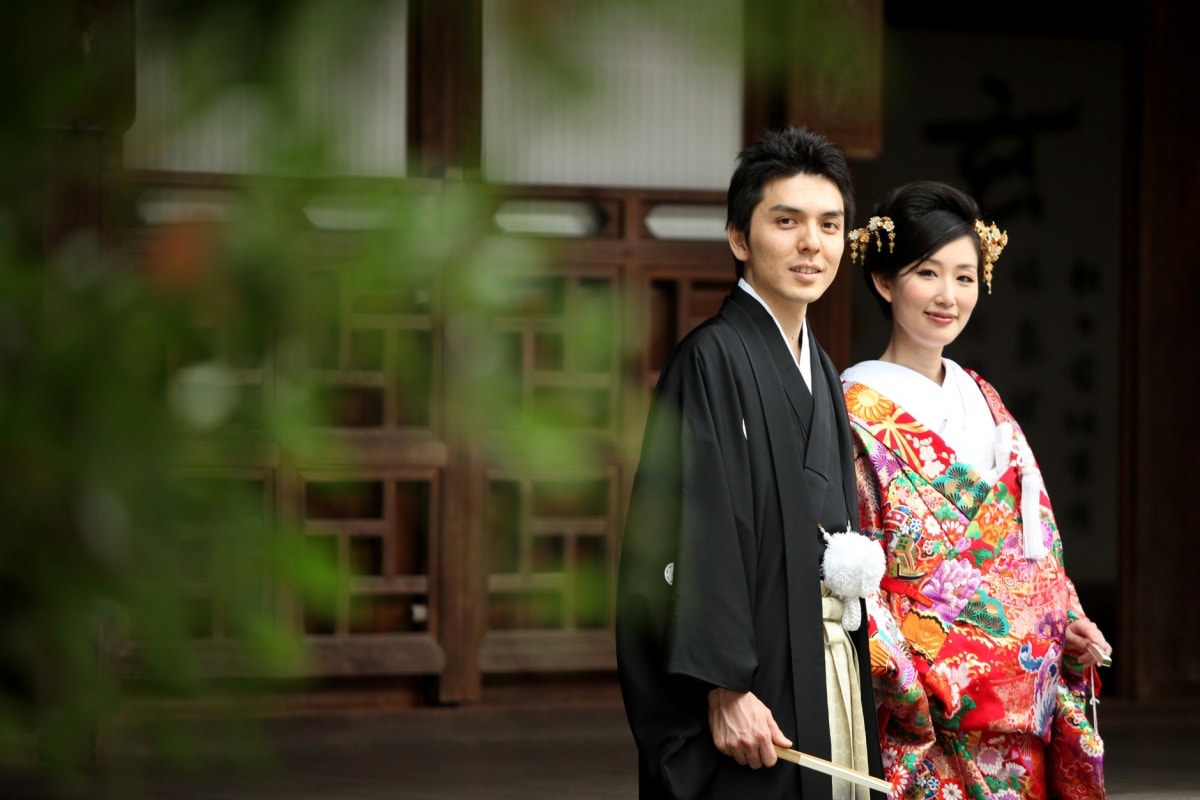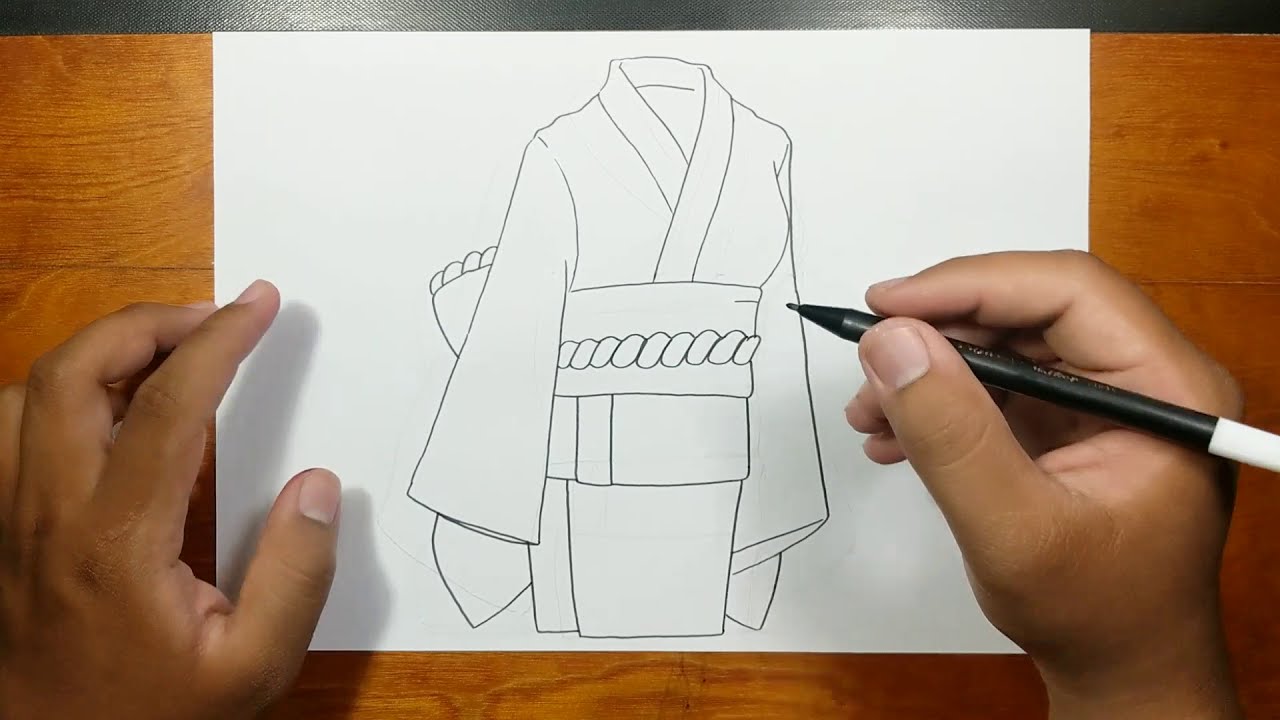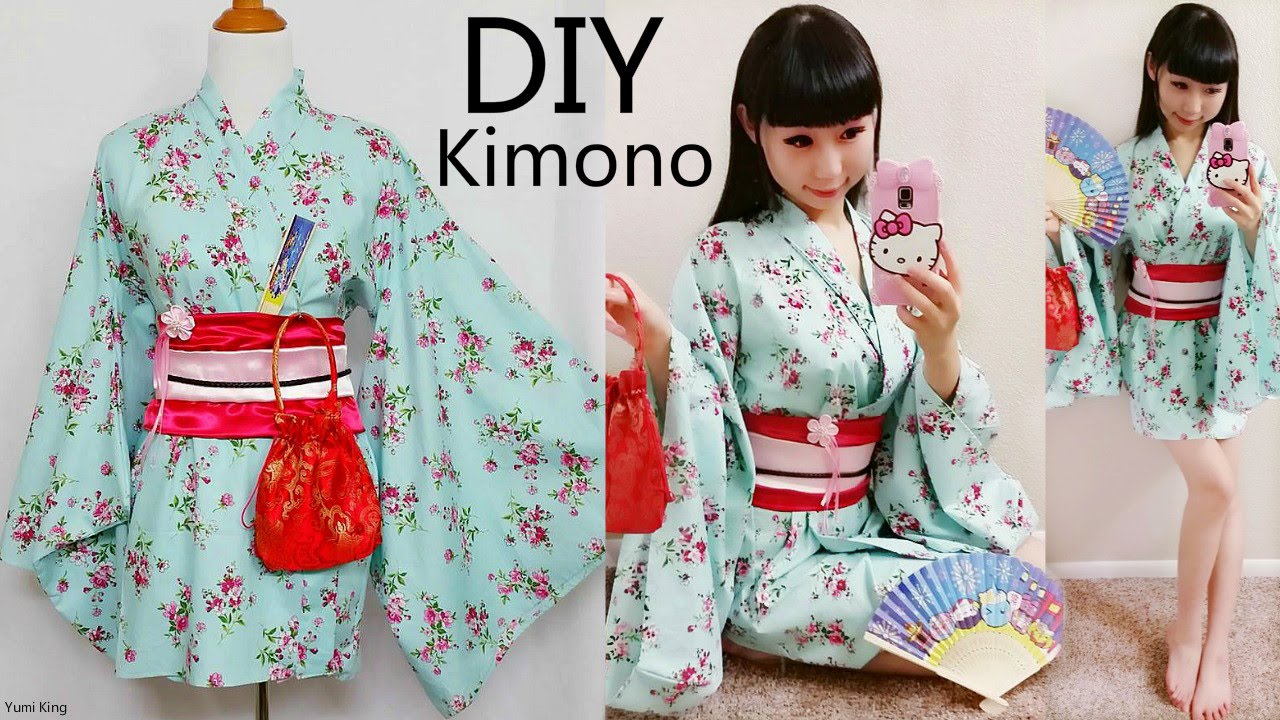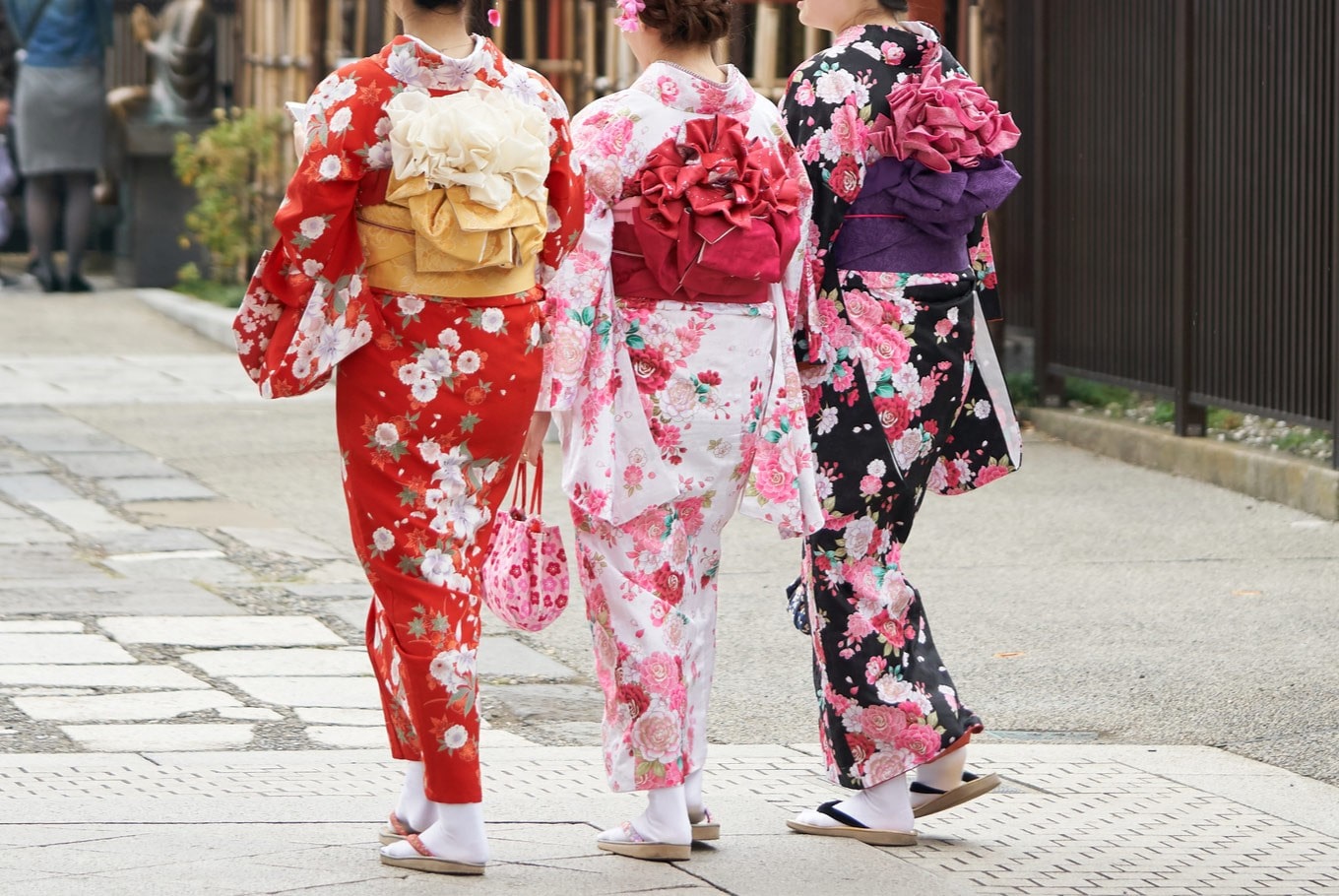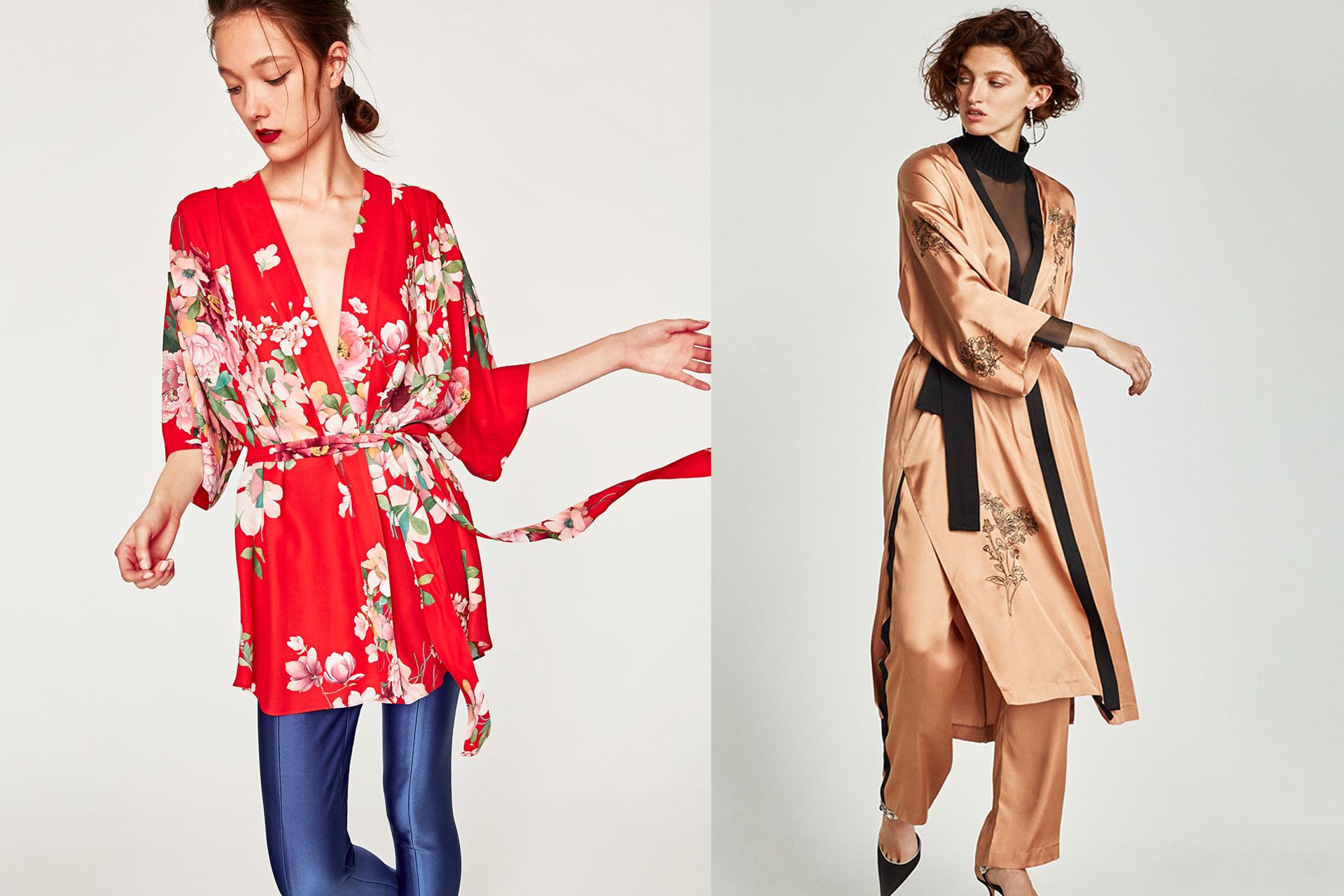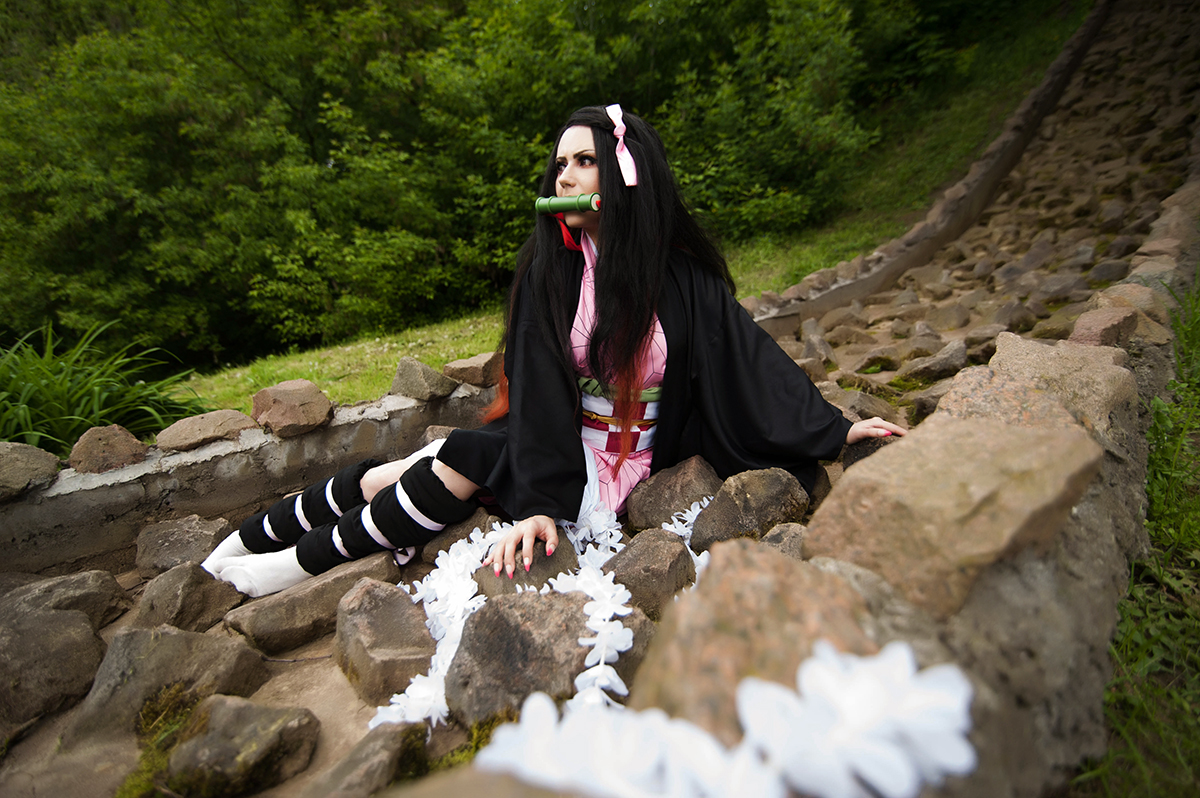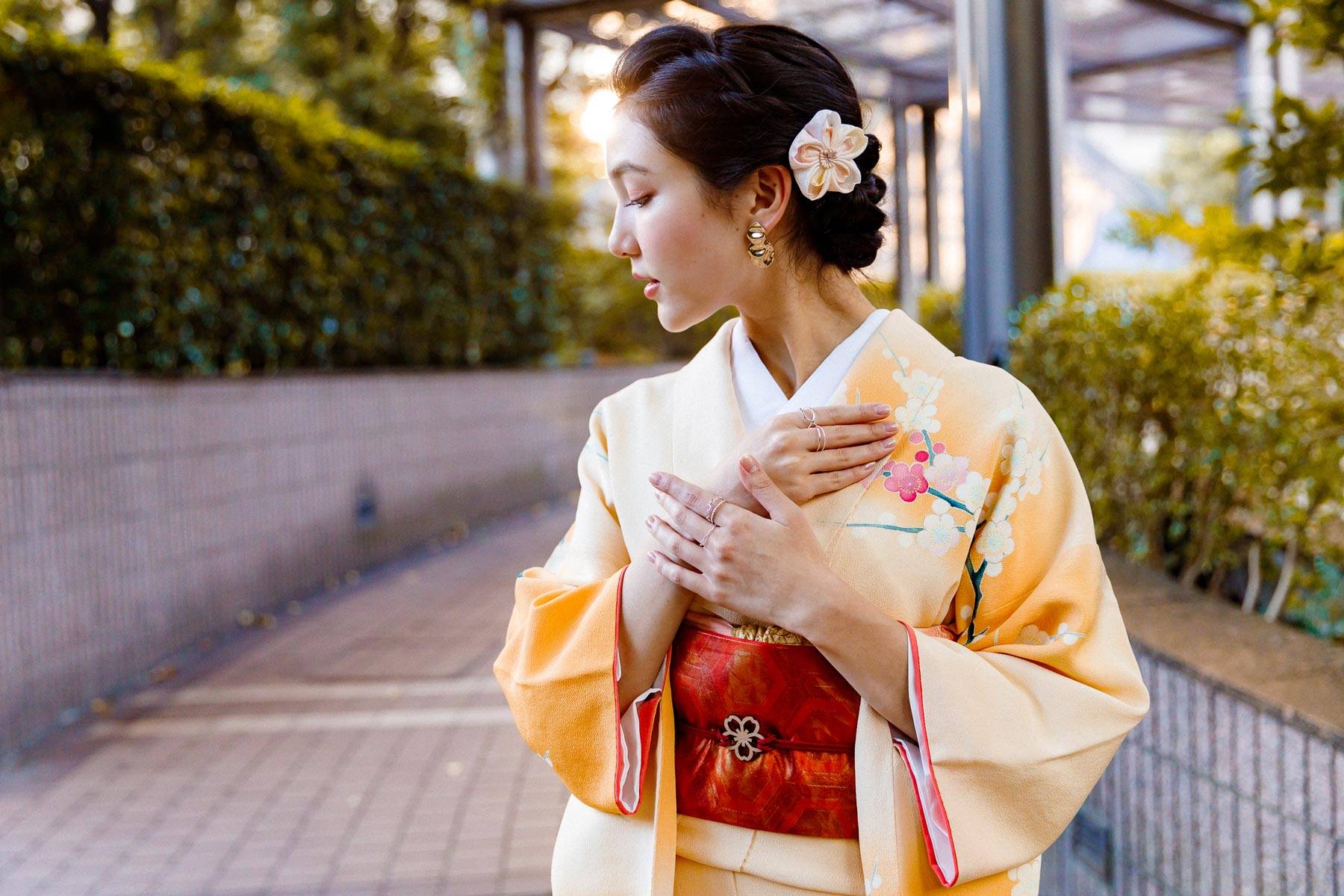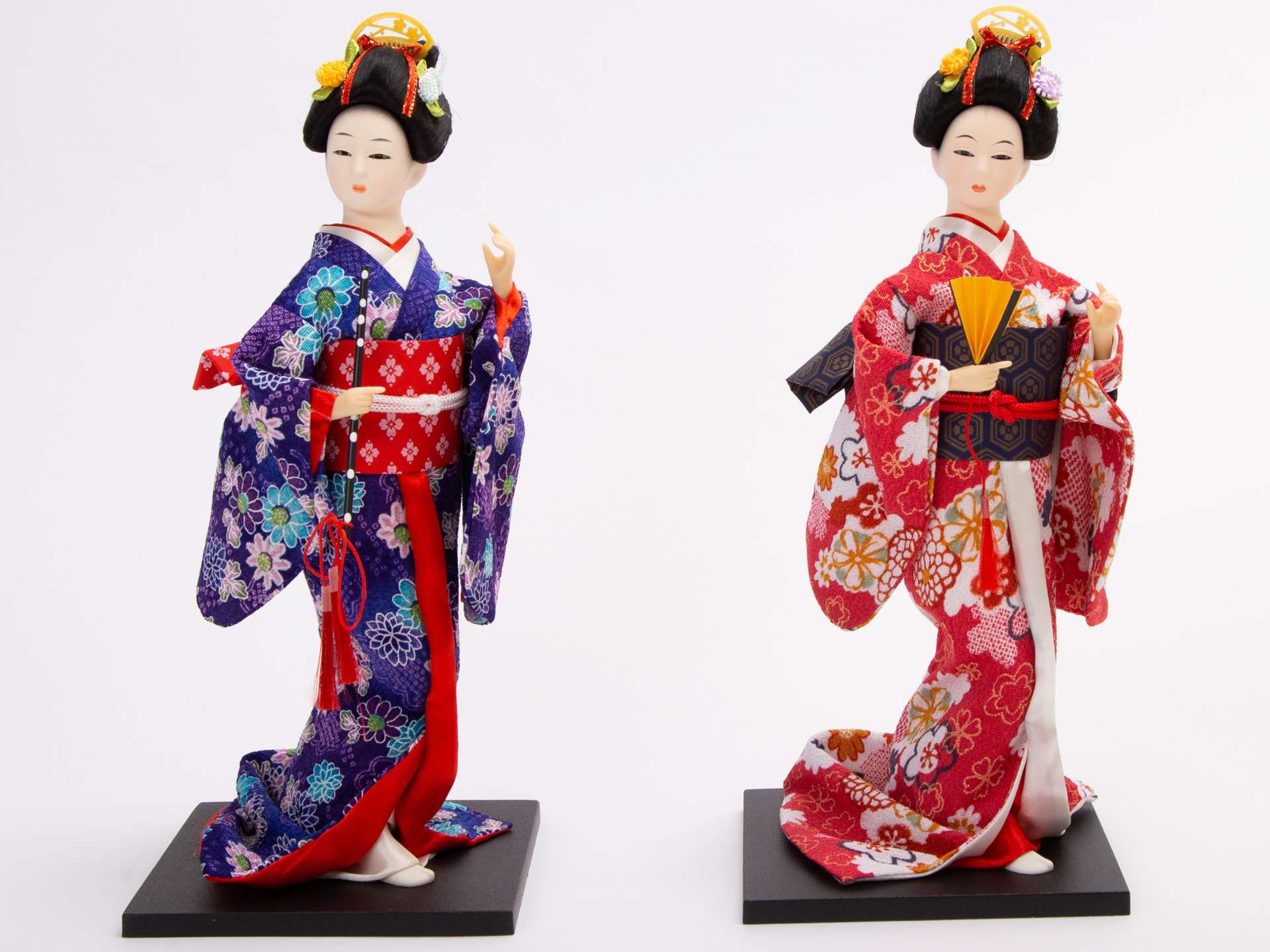Home>How-to Guides>For All>How To Wear A Kimono Properly
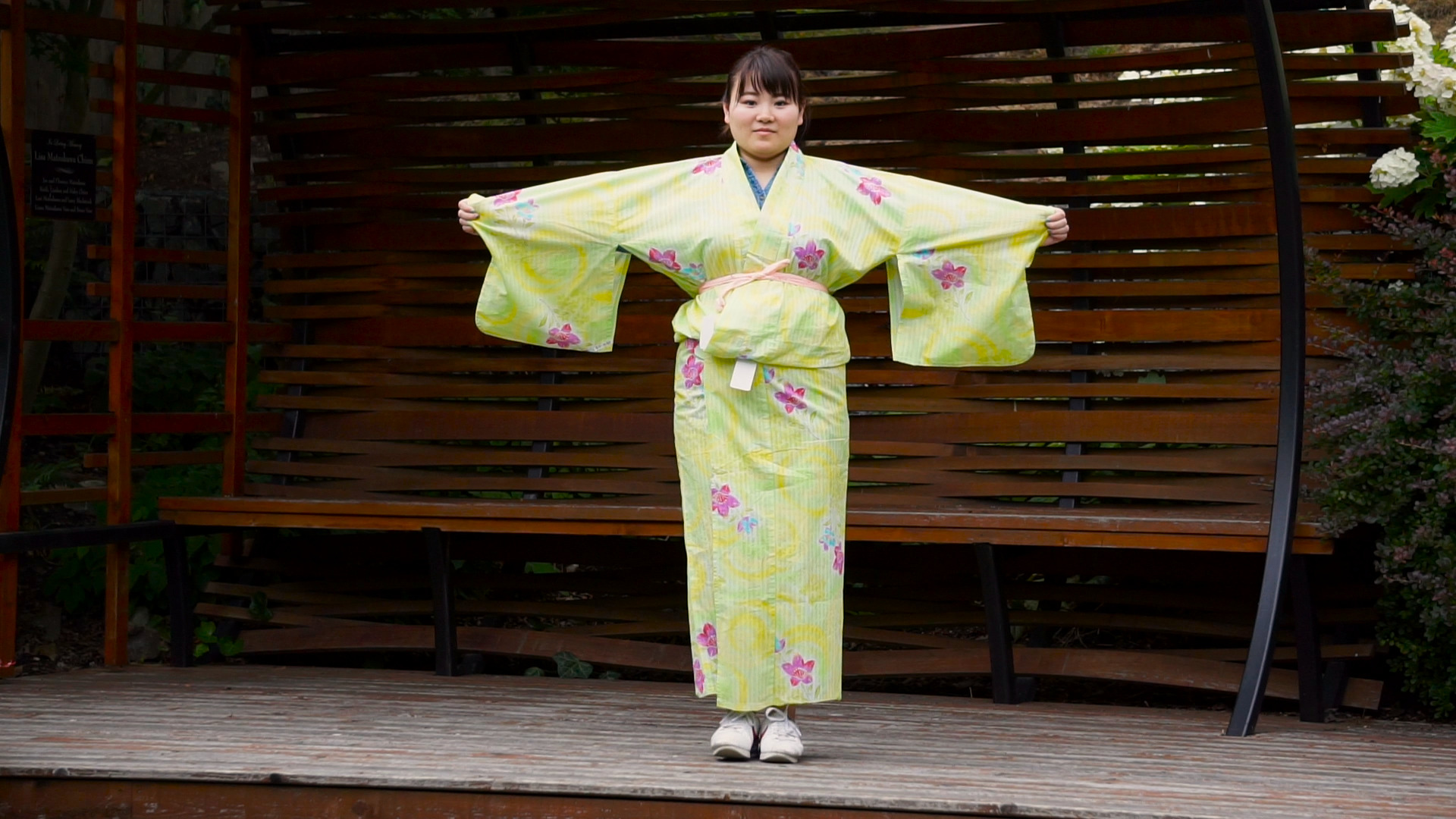

For All
How To Wear A Kimono Properly
Modified: September 23, 2023
Learn how to wear a kimono properly for all occasions. Discover the secrets to styling this traditional Japanese garment in a way that suits everyone.
(Many of the links in this article redirect to a specific reviewed product. Your purchase of these products through affiliate links helps to generate commission for Under-tec.com, at no extra cost. Learn more)
Table of Contents
Introduction
Welcome to the world of kimono fashion! Wearing a kimono is not just about donning a traditional Japanese garment; it is a cultural experience that showcases elegance and grace. Whether you’re attending a formal event, exploring Japanese culture, or simply want to embrace a new style, learning how to wear a kimono properly is essential. In this guide, we will take you through each step, from understanding the kimono to styling accessories, to ensure you achieve the perfect ensemble.
The kimono is a traditional Japanese garment with a rich history that dates back centuries. It is typically made from luxurious silk fabric and adorned with intricate designs that reflect Japanese art and culture. The kimono consists of several layers, including an inner garment called the juban, the kimono itself, and a wide belt known as the obi. Each element plays a crucial role in creating a stunning and well-balanced look when worn together.
Choosing the right kimono is essential for a polished and authentic ensemble. There are various types of kimono, ranging from casual cotton options to elaborate and ornate silk designs. Factors such as the occasion, season, and personal style preferences should be considered when selecting a kimono. Additionally, paying attention to the length, width, and pattern of the kimono is crucial to ensure that it complements your body shape and enhances your overall appearance.
Proper undergarments are a crucial foundation for wearing a kimono. The juban, or kimono underwear, is worn beneath the kimono and serves multiple purposes. It not only provides a smooth base for the kimono but also adds comfort and helps to maintain proper fit. Depending on the formality of the occasion, the juban can be simple or intricately designed. It is important to choose the appropriate juban to ensure a seamless and comfortable wearing experience.
Now that you have prepared all the necessary elements, it’s time to put on the kimono. Putting on a kimono can be a meticulous process, but with practice, it becomes second nature. Starting with the juban, carefully layer the kimono over it, making sure to adjust the length and width to achieve the desired fit. Pay attention to the placement of the sleeves, collar, and overall balance of the kimono to ensure a stunning and authentic appearance.
Understanding the Kimono
Before diving into the process of wearing a kimono, it is important to have a basic understanding of this iconic Japanese garment. The kimono, which translates to “thing to wear,” is a traditional outfit that has evolved over centuries.
The kimono is typically made from silk fabric, known for its luxurious feel and vibrant colors. However, you can also find kimono made from cotton or synthetic materials for everyday wear. Traditionally, the kimono is adorned with intricate patterns and designs that reflect various aspects of Japanese culture, such as nature, seasons, and symbolic motifs.
One of the distinctive features of the kimono is its loose and straight-cut shape, which is designed to fit various body shapes and sizes. It is usually composed of several layers, including the innermost layer called the juban, an optional underdress known as nagajuban, and the kimono itself. The kimono is wrapped around the body, overlapped at the front, and secured with a wide and decorative belt known as the obi.
Each element of the kimono has its own significance and purpose. The juban acts as a base layer, providing a smooth foundation and adding comfort. It also helps to protect the kimono from body oils and perspiration. The nagajuban is worn underneath for added warmth during cold weather or to add extra layers for more formal occasions.
The kimono’s sleeves vary in length depending on the occasion, with longer sleeves indicating formality. Moreover, the collar of the kimono can be adjusted to highlight the wearer’s neck and enhance the overall appearance. Patterns and colors on the kimono are also chosen carefully to match the event, season, and personal preference.
Furthermore, the obi plays a significant role in completing the kimono ensemble. This wide sash is wrapped tightly around the waist and tied in a variety of decorative knots. The obi not only secures the kimono but also adds a touch of elegance and serves as a canvas for artistic expression, with elaborate designs and patterns.
In understanding the kimono, it is important to recognize the cultural and historical significance it holds. The kimono represents tradition, artistry, and attention to detail. It embodies Japan’s rich heritage and symbolizes the beauty and grace of Japanese culture.
By grasping the essence of the kimono, you can truly appreciate the beauty and significance of wearing this unique garment. In the next sections, we will delve into the process of choosing the right kimono, putting it on, and adding the finishing touches to create a stunning kimono ensemble.
Choosing the Right Kimono
When it comes to wearing a kimono, choosing the right one is key to achieving a perfect and authentic look. There are several factors to consider when selecting a kimono, from the occasion to personal style preferences.
First and foremost, consider the occasion for which you will be wearing the kimono. Is it a formal event such as a wedding or a traditional ceremony? Or is it a more casual gathering or even a day out exploring Japanese culture? The formality of the event will determine the type of kimono appropriate to wear. Formal occasions typically call for silk kimono with elaborate designs, while casual events allow for more flexibility in fabric choices such as cotton or synthetic materials.
Next, consider the season in which you will be wearing the kimono. Kimonos come in different weights and fabrics suitable for each season. For example, lightweight cotton or linen kimono are perfect for hot summers, while silk kimono provide warmth and elegance in colder months. It’s important to choose a kimono that allows you to be comfortable and appropriately dressed based on the season.
Personal style preferences also play a significant role in choosing the right kimono. Some people may be drawn to bold and vibrant patterns, while others prefer more subtle and understated designs. Take the time to explore different patterns, colors, and motifs to find a kimono that resonates with your personal taste and style.
In addition to considering the occasion, season, and personal style, it’s important to pay attention to the fit of the kimono. The length and width of the kimono should be suitable for your body shape and height. A well-fitted kimono will drape elegantly and accentuate your features, while an ill-fitting kimono can look awkward and detract from the overall ensemble.
Another aspect to consider is the pattern and design of the kimono. Traditional kimono often feature intricate motifs inspired by nature, such as flowers, birds, or landscapes. These patterns are not only aesthetically pleasing but also carry cultural symbolism. Choose a pattern that resonates with you or has a special meaning to add a personal touch to your kimono ensemble.
Lastly, consider your budget when choosing a kimono. Kimonos can range in price depending on the quality of fabric, craftsmanship, and rarity. While silk kimono tend to be more costly, there are options for different budgets, including second-hand kimono or rental services.
By considering the occasion, season, personal style, fit, pattern, and budget, you can confidently choose the right kimono that reflects your individuality and creates a stunning visual impact. In the next section, we will explore the importance of proper undergarments to enhance the wearing experience and ensure a polished appearance.
Proper Undergarments
When it comes to wearing a kimono, proper undergarments are crucial to achieving a polished and comfortable fit. The main undergarment for a kimono is the juban, also known as the kimono underwear.
The juban serves multiple purposes in the kimono ensemble. Firstly, it acts as a base layer, providing a smooth and seamless foundation for the kimono. By wearing a juban, the kimono will glide effortlessly over the body, ensuring that it drapes properly and maintains its intended shape.
In addition to the practical function of creating a smooth base, the juban also adds comfort. The soft fabric of the juban helps to prevent any irritation or discomfort that may arise from wearing the kimono directly against the skin. It also acts as a barrier, absorbing any perspiration and oils, thereby protecting the kimono from staining or damage.
The style and design of the juban can vary depending on the formality of the occasion and personal preference. For more casual events, a simpler juban may suffice, while for formal occasions, a more intricately designed juban, with lace or embroidery, can add an extra layer of elegance.
Another optional undergarment is the nagajuban, which is a long underdress worn beneath the juban. The nagajuban provides additional layers to the ensemble, adding warmth during colder months or lending a more formal appearance for special occasions. It can also serve as an extra buffer between the body and the kimono fabric, ensuring maximum comfort.
When choosing a juban and nagajuban, consider the fabric and fit. Opt for lightweight and breathable materials that will not add unnecessary bulk or make you feel too warm. The length of the juban and nagajuban should be appropriate, so they are not visible when wearing the kimono.
In addition to the undergarments, it is important to wear appropriate accessories such as tabi socks and a decorative collar, known as haneri, to complete the kimono ensemble. Tabi socks are traditional split-toed socks that are worn with zori sandals, which are typically worn with a kimono. Haneri is a fabric collar that is attached to the juban collar, partially visible when wearing the kimono, adding a touch of elegance and color.
By wearing proper undergarments, you not only ensure a comfortable and seamless fit but also demonstrate respect for the traditional customs and etiquette associated with wearing a kimono. In the next section, we will walk you through the process of putting on the kimono, step by step.
Putting on the Kimono
Putting on a kimono is a meticulous process that requires attention to detail and a bit of practice. Once you have the proper undergarments on, it’s time to start layering the kimono over them.
Begin by putting on the juban, ensuring that it is smooth and properly adjusted on your body. The collar of the juban should sit neatly around the neck, and the sleeves should be positioned comfortably on your arms.
Next, take the kimono and hold it in front of you, with the left side overlapping the right. Adjust the length of the kimono so that it reaches just above your ankles. Make sure the hem is even all around.
Wrap the right side of the kimono across your body, overlapping it with the left side. Ensure that the collar lies flat and even. Hold the overlapping sides together with one hand, while using your other hand to adjust the layers and smooth out any wrinkles.
Now it’s time to tie the obi, the wide belt that secures the kimono. Place the obi around your waist, with the ends extending towards your back. Cross the ends over each other and bring them back around to the front.
Hold the obi tightly and begin to tie it in a knot at the back. You can create various decorative knots, such as a taiko knot or a butterfly knot, depending on your preference and the formality of the occasion. Take care to make the knot secure but not too tight, as you want to be able to move comfortably.
Once the obi is tied, adjust the layers of the kimono again, making sure that the collar is straight and the fabric is evenly distributed. Smooth out any wrinkles or folds, paying attention to the sleeves, which should have a graceful and balanced appearance.
Finally, adjust the position of the obi, ensuring that it sits at the small of your back and adds definition to your waistline. Make any final tweaks to the length and appearance of the kimono, ensuring that it looks balanced and symmetrical on your body.
Take a moment to admire your kimono ensemble in the mirror. The time and effort put into putting on the kimono properly will be evident in the stunning and graceful appearance you have achieved.
Remember, practice makes perfect when it comes to putting on a kimono. It may take a few attempts to get everything just right, but with patience and perseverance, you will soon master the art of wearing a kimono. In the next section, we will discuss how to tie the obi and add the finishing touches to complete your kimono ensemble.
Tying the Obi
Tying the obi, the wide belt that secures the kimono, is an important step in completing your kimono ensemble. The obi not only holds the kimono together but also adds a decorative and elegant touch to the overall look.
There are several different types of obi knots that you can choose from, depending on the formality of the occasion and personal preference. Here, we will outline a basic method for tying the obi, known as the “taiko” knot.
- Start by holding the obi at your waist, with the ends extending towards your back. The obi should be positioned lower than your natural waistline. If needed, fold the obi in half lengthwise to create a narrower width.
- Cross the ends of the obi in the back and bring them back to the front, ensuring that they are of equal length.
- Take the left side of the obi and wrap it tightly around your body, crossing it over the right side. Continue wrapping the obi until it comes back around to the front.
- Hold the crossed ends in place with one hand while using your other hand to adjust the layers of the obi, creating a neat and even appearance.
- Now, with the crossed ends held in place, bring the right end over the left end in a decorative manner, creating a loop with the right end. This loop will become the knot of the obi.
- Pass the right end of the obi through the loop you created, pulling it gently to tighten the knot. Adjust the knot to your desired size and shape, making sure it is centered and symmetrical.
- Finally, take the excess ends of the obi and fold them neatly behind the knot, tucking them in or securing them with an obi clip or decorative accessory to create a clean and polished appearance.
Remember, tying the obi may take some practice to get the knot tight and symmetrical. It’s essential to take your time and adjust the layers and shape of the obi as needed. Feel free to experiment with different knot styles or seek guidance from experienced kimono wearers or tutorials for more intricate obi tying techniques.
Once you have tied the obi and secured the ends, take a moment to ensure that the knot is secure but not uncomfortably tight. Adjust the layers of the kimono as needed, smoothing out any wrinkles or folds and ensuring that everything is properly aligned.
The obi is one of the focal points of your kimono ensemble, so take pride in tying it with care and precision. By mastering the art of tying the obi, you will complete your kimono look with elegance and style.
In the next section, we will discuss the importance of adjusting the length of the kimono to achieve a balanced and visually appealing appearance.
Adjusting the Length
Properly adjusting the length of your kimono is essential to achieve a balanced and visually appealing appearance. The length of the kimono should be adjusted according to your height and the desired overall look.
The ideal length of the kimono is typically just above the ankle, with the hemline grazing the floor. This length ensures that the kimono looks elegant and does not drag on the ground, which could cause it to get dirty or damaged.
When adjusting the length, start by standing straight with your feet together. Hold the kimono up against your body, ensuring that the collar is positioned correctly around your neck.
Next, determine the desired length by folding up the excess fabric at the hem. Gradually adjust the fold until the kimono reaches the desired length, slightly above the ankle.
Once you have determined the appropriate length, secure the fold by using a series of small, discreet clips or pins. These clips can be hidden under the layers of the kimono or covered with the obi, ensuring that they are not visible when wearing the ensemble.
After securing the length, take a few steps and move around to ensure that the kimono is comfortable and allows for ease of movement. Check that the collar, sleeves, and overall balance of the kimono are visually pleasing and symmetrical.
It’s important to note that the length of the kimono can also be adjusted by adjusting the height of the obi. By positioning the obi higher or lower on the waist, you can slightly alter the effect and appearance of the kimono’s length.
When adjusting the length, it’s crucial to consider your personal style and the occasion for which you are wearing the kimono. For more formal events, a slightly longer length may be preferred for a more traditional and elegant look. On the other hand, for a more casual or modern twist, you can opt for a slightly shorter length.
Remember, the goal is to create a look that is visually appealing and reflects your personal taste while still respecting the traditions associated with wearing a kimono.
By taking the time to carefully adjust the length of your kimono, you can ensure that it fits comfortably, flatters your silhouette, and creates a harmonious and balanced overall appearance.
In the next section, we will explore the various accessories that can be used to enhance and personalize your kimono ensemble.
Styling Accessories
Accessories play a significant role in enhancing and personalizing your kimono ensemble. They can add a touch of flair, color, and individuality to your overall look. Here are some key accessories you can consider when styling your kimono:
1. Obi Accessories: The obi, the wide belt that secures the kimono, can be adorned with various accessories to add a decorative element. Obi-age is a scarf-like accessory that is tied around the obi knot, adding texture and color. Obi-jime is a narrow band that wraps around the obi several times, creating a contrasting or complementary color accent.
2. Obidome: An obidome is a decorative accessory that can be attached to the obijime, adding a focal point and a touch of elegance. It can be a brooch, a decorative charm, or a piece of jewelry that complements the overall aesthetic of your kimono ensemble.
3. Kanzashi: Kanzashi are traditional Japanese hair ornaments that can be worn with a kimono. They come in various designs, shapes, and sizes and can be made from materials such as silk, metal, or resin. Kanzashi can be used to create intricate hairstyles or simply as a decorative accessory for your hair.
4. Zori or Geta: Zori and geta are traditional Japanese footwear worn with the kimono. Zori are flat sandals with a thong-like strap, while geta are wooden clogs with elevated soles. These footwear options not only provide comfort and stability but also add a traditional touch to your kimono ensemble.
5. Haori: A haori is a short, jacket-like garment that is worn over the kimono to add an additional layer or to provide warmth. Haori often feature intricate designs and can be coordinated to complement or contrast with the kimono pattern or colors.
6. Sensu or Uchiwa: Sensu is a folding fan, while uchiwa is a flat, non-folding fan. Both of these accessories can be used as practical tools to keep cool during hot weather or as decorative accents when held with elegance while wearing a kimono.
7. Bag or Purse: Completing your kimono ensemble with a small bag or purse adds functionality while also allowing you to express your personal style. Consider a bag that complements the colors or patterns of your kimono, such as a traditional woven basket bag or a small silk purse.
When choosing and styling your accessories, consider the overall aesthetic of your kimono ensemble. Harmonize the colors, patterns, and materials of the accessories with the kimono, ensuring that they enhance the overall look rather than overwhelming it.
Remember, accessorizing is an opportunity to showcase your style and personality while wearing a kimono. Have fun experimenting with different combinations and finding accessories that truly reflect who you are.
In the final section, we will add the finishing touches to your kimono ensemble and provide some closing thoughts.
Final Touches
As you finalize your kimono ensemble, there are a few additional touches that can elevate your look to its full potential. These final touches ensure that every detail is attended to, resulting in a polished and authentic appearance.
1. Han-Eri: The han-eri is a decorative collar that is attached to the juban collar, partially visible when wearing the kimono. It adds an extra layer of elegance and color to the neck area, providing a contrast or complement to the kimono’s pattern. Consider selecting a han-eri that harmonizes with the colors and motifs of your kimono.
2. Himo: Himo are thin cords used to secure various parts of the kimono ensemble. They can be used to tie the sleeves in place or to adjust the length of the kimono. Choose himo that coordinate with the colors of your kimono and tie them neatly and securely.
3. Hair and Makeup: Pay attention to your hair and makeup to complete your kimono look. Traditional hairstyles such as the shimada or the mage can be considered to complement the elegance of the kimono. Additionally, opt for makeup that enhances your features and complements the overall aesthetic of the ensemble.
4. Posture and Carriage: Maintaining good posture and a graceful carriage can significantly enhance the overall appearance of your kimono ensemble. Walk with small, elegant steps and maintain an upright posture to showcase the beauty and elegance of the kimono.
5. Confidence and Gratitude: Lastly, wear your kimono with confidence and gratitude. Embrace the experience and the cultural significance behind the kimono. Be aware of the rich history and heritage it represents, and let your appreciation for this traditional garment shine through in your demeanor.
By paying attention to these final touches, you can ensure that your kimono ensemble is complete and reflects the beauty and craftsmanship associated with this iconic garment.
Remember, wearing a kimono is not just about the physical act of putting on the clothing; it is an experience that connects you to Japanese culture, history, and artistry. Embrace the opportunity to express your individuality while honoring the traditions of the kimono.
Now that you have learned the essential steps to properly wear a kimono, it’s time to step out with confidence and immerse yourself in the beauty and grace of this timeless garment.
Conclusion
Wearing a kimono properly is not just about putting on a traditional Japanese garment; it is an art form that allows you to embrace elegance, tradition, and culture. It is a journey that involves understanding the kimono, choosing the right one, wearing it with proper undergarments, and adding the final touches to create a stunning ensemble.
By understanding the kimono’s history, fabric, and design elements, you can gain a deeper appreciation for this iconic garment. Understanding the different types of kimono and selecting one that suits the occasion, season, and your personal style is essential to a successful kimono ensemble.
Proper undergarments, such as the juban and nagajuban, create a smooth and comfortable foundation for the kimono. Tying the obi with care and precision adds a decorative and elegant touch to your look.
Adjusting the length of the kimono and paying attention to the finer details, such as han-eri and himo, ensure a polished appearance. Styling accessories, such as obi accessories, kanzashi, and zori, allow you to add your personal touch and express your unique style.
Finally, consider the final touches, including hair and makeup, posture, and confidence, to bring your kimono ensemble to its full potential.
Wearing a kimono is not just about the physical attire but also about the experience and appreciation of Japanese culture. It is an opportunity to connect with tradition and embody elegance and grace.
So, the next time you have the opportunity to wear a kimono, remember the steps and tips outlined in this guide. Embrace the journey with confidence and gratitude, knowing that you are carrying on a beautiful tradition that has captivated generations.
Now, go forth and enjoy the magic of the kimono!
